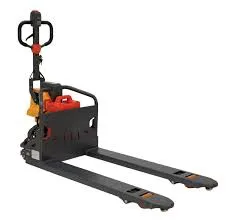


Safe Use of Chain Blocks Essential Guidelines for Efficient Lifting Operations
Chain blocks, also known as hand chain hoists, are vital tools in various industries, including construction, manufacturing, and warehousing. These mechanical devices enable users to lift and maneuver heavy loads with minimal physical exertion. However, while chain blocks enhance productivity and efficiency, improper use can lead to accidents, injuries, and damage to the equipment or load. Therefore, understanding the principles of safe use is crucial for anyone involved in lifting operations.
1. Understanding the Equipment
Before using a chain block, it is essential to understand how it operates. Chain blocks consist of a chain mechanism, a pulley, and a ratchet system that allows users to lift loads vertically. Familiarize yourself with the manufacturer's instructions, specifications, and safety guidelines. Each chain block has a specified load capacity; exceeding this limit undermines safety and can result in catastrophic failure.
2. Regular Inspection and Maintenance
Safety begins with proper maintenance. Regularly inspect your chain block for any signs of wear and tear. Components to check include
- The chain Look for signs of elongation, rust, or deformation. - The hooks Inspect for cracks, bends, or damage that could compromise their integrity. - The brake system Ensure that the brakes function correctly, holding loads securely without slipping.
Establish a routine maintenance schedule and adhere to it. Some manufacturers recommend professional servicing at specified intervals to guarantee optimal performance.
3. Proper Setup and Usage
Follow these guidelines to ensure a safe lifting operation
- Choose the right location Set up the chain block in an area free from obstacles, ensuring that there is ample space for the load’s movement. - Secure anchorage Attach the chain block to a sturdy and stable support structure, capable of handling the load's weight. This may include beams, scaffolding, or frames. Avoid using unstable or temporary supports.
- Use the correct lifting technique Always ensure that the load is balanced before lifting. If using multiple chain blocks, ensure that they are synchronized to avoid imbalances that could lead to tipping or swinging.

- Be aware of load limits Never exceed the rated capacity of the chain block. Always factor in the weight of the load and any potential dynamic forces during lifting.
When operating a chain block, keep these best practices in mind
- Clear the area Before lifting, ensure the area is clear of personnel and obstacles. Communicate with your team to ensure everyone is aware that lifting is about to take place.
- Use hand signals or radios Establish a clear communication method with your team while operating the chain block. This reduces the risk of misunderstandings and accidents.
- Maintain a safe distance Stay out of the load's path and avoid working directly under suspended loads. This minimizes the risk of injury in case of an unexpected drop.
- Avoid sudden jerks or drops Lifting and lowering a load should be gradual. Sudden movements can destabilize the load and result in accidents.
5. Training and Certification
Ensure that all personnel involved in operating chain blocks are properly trained. They should understand the correct use, maintenance procedures, and safety protocols. Regular training refreshers can help reinforce skills and knowledge, keeping safety at the forefront of operations.
Conclusion
The safe use of chain blocks is paramount to ensuring productive and risk-free lifting operations. By understanding the equipment, maintaining it properly, setting it up safely, adhering to proper operating practices, and providing adequate training, organizations can significantly reduce the risks associated with lifting heavy loads. Remember, safety is not just a responsibility; it's an essential part of any successful operation. Prioritizing safety ensures a healthier workplace and fosters a culture of care and awareness among all team members.



